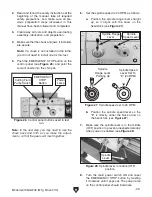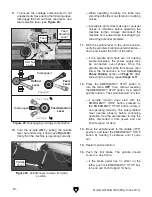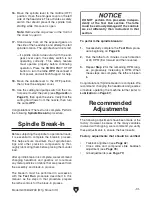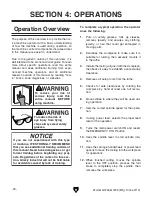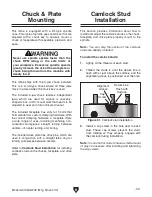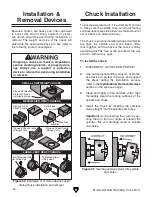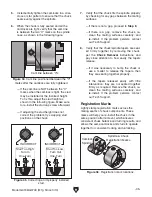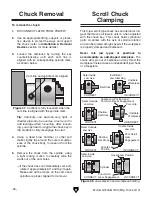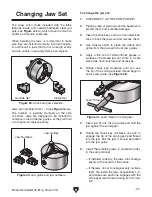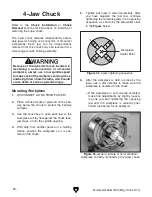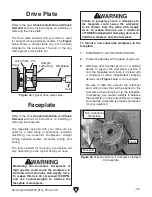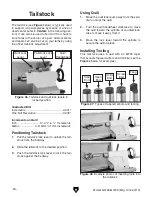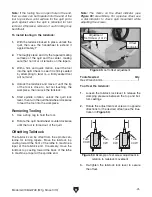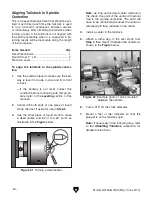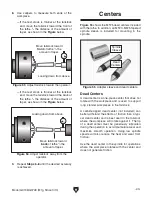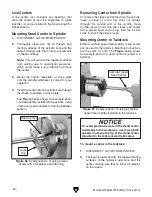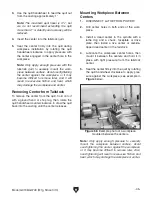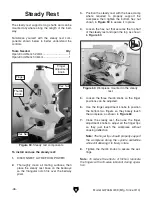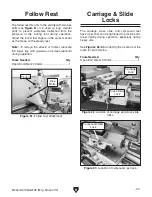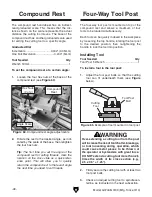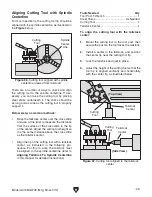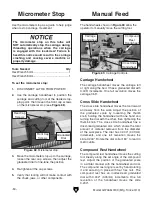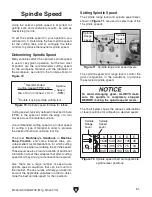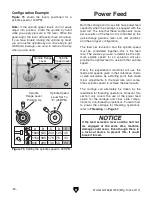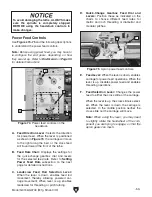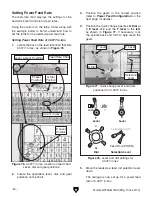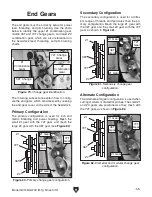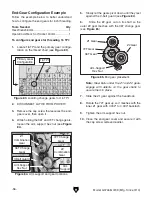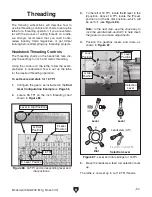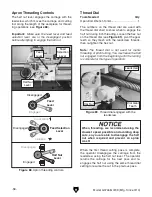
Model G0746/G0749 (Mfg. Since 3/13)
-43-
8. Use calipers to measure both ends of the
workpiece.
— if the test stock is thicker at the tailstock
end, move the tailstock toward the front of
the lathe
1
⁄
2
the distance of the amount of
taper, as shown in the
figure below.
Move tailstock toward
front of lathe
1
/
2
the
amount of taper.
Looking down from above.
figure 53. adjust tailstock toward the operator.
— if the test stock is thinner at the tailstock
end, move the tailstock toward the back of
the lathe
1
⁄
2
the distance of the amount of
taper, as shown in the
figure below.
Looking down from above.
Move tailstock toward
back of lathe
1
/
2
the
amount of taper.
figure 54. adjust tailstock away from the
operator.
9. repeat Steps 6–8 until the desired accuracy
is achieved.
figure 55 shows the Mt#5 dead centers included
with the lathe. in addition, an Mt#7–Mt#5 tapered
spindle sleeve is included for mounting in the
spindle.
Dead centers
a dead center is a one-piece center that does not
rotate with the workpiece and is used to support
long, slender workpieces in the tailstock.
a carbide-tipped dead center (not included) can
better withstand the effects of friction than a typi-
cal dead center and is best used in the tailstock
where the workpiece will rotate against it. the tip
of a dead center must be generously lubricated
during the operation to avoid premature wear and
maximize smooth operation. Using low spindle
speeds will also reduce the heat and wear from
friction.
Use the dead center in the spindle for operations
where the workpiece rotates with the center and
does not generate friction.
figure 55. adapter sleeve and dead centers.
centers
dead
Centers
spindle
sleeve

